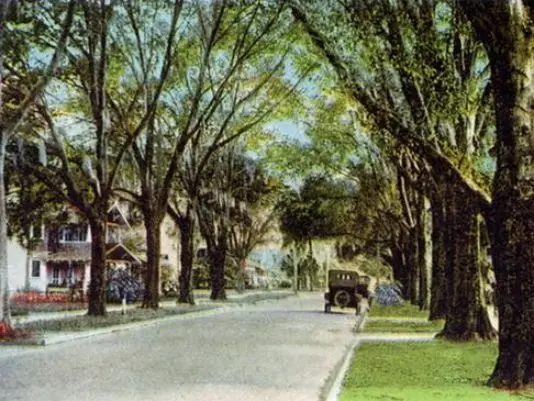In his play “Romeo and Juliet,” William Shakespeare wrote: “What’s in a name? That which we call a rose by any other name would smell as sweet.”
Juliet’s argument was that it doesn’t really matter what people, places, or things are called; it’s what they are that is important.
Pioneers living in Central Florida in 1845 would disagree. When Florida became a state that year, the name Mosquito County was changed to Orange County. Although there were more mosquitos in the area than oranges, residents and politicians felt that the new name was much more attractive.
In 1842, a Georgia man named Aaron Jernigan established a very successful farm in the area. The small community took the name Jernigan in honor of the prosperous family.
The first post office in Jernigan opened in 1850. Seven years later, the name of the community was changed to Orlando. In 1875, the twenty-nine residents of Orlando incorporated their municipality.
How did Orlando get its name? There are several interesting theories.
Many Florida towns, including Orlando, were built around forts constructed in the 1830s during the Seminole Indian Wars. The United States government strategically placed these forts about a day’s walk apart to protect groups of marching soldiers from attacks at night.
Orlando grew around the site of Fort Gatlin. Other Florida towns such as Fort Pierce, Fort Lauderdale, and Fort Myers retain their Seminole Indian War fort names.
For many years it was popularly accepted that the city of Orlando was named after a soldier named Orlando Reeves, who was allegedly killed by Seminole Indians in 1835. It was believed that Reeves gave his life protecting other soldiers against an attack as they camped outside Fort Gatlin.
While generally agreeing with this account of how Orlando was named, a newspaper story from 1884 identifies the name of the soldier who gave his life for his comrades as Orlando Jennings.
Interestingly, neither an Orlando Reeves nor an Orlando Jennings are on the War Department roster listing the names of the 1,466 soldiers killed during the Seminole Indian Wars.
Adding to the confusion is the fact that a wealthy plantation owner named Orlando J. Rees lived near Fort Gatlin in the 1830s and was nicknamed “Colonel” Rees, although he never served in the military. A letter Rees wrote in 1837 states that he had trouble with the Seminole Indians who “stole” some of his 110 slaves. The 1840 census indicates that Rees no longer operated his huge cattle ranch and farm in Central Florida.
Was “Colonel” Orlando J. Rees incorrectly identified as the “soldier” Orlando Reeves? Does the middle initial in Rees’s name stand for “Jennings,” adding further confusion? Does the fact that Rees had trouble with the Seminoles indicate that he may have been killed by them? Did Rees simply move away prior to the 1840 census, or was his plantation abandoned following his death?
Historians are still trying to answer these questions.
Another popular legend of how Orlando got its name centers around a man named “Mr. Orlando” who died near the site of Fort Gatlin while taking an ox caravan to Tampa. He was supposedly buried at the spot where he died. People would say “There lies Orlando” and the name stuck.
The accuracy of this story has been doubted as well, which brings us back to playwright and poet William Shakespeare.
A judge from South Carolina named J.G. Speer, moved to Florida in 1854, and helped to organize Orange County. In 1856, he was responsible for having the county seat moved from Enterprise to Orlando. Some people believe that Speer named Orlando after the character in Shakespeare’s comedy “As You Like It” because he was a fan of the bard.
This theory about how Orlando got its name is based on circumstantial evidence, but another fact adds to its plausibility. Orlando’s lover in “As You Like It” is named Rosalind. The main street heading north through the heart of the city of Orlando is also named Rosalind.
Perhaps the man who wrote “What’s in a name?” provided Orlando with one.
Dr. Ben Brotemarkle is executive director of the Florida Historical Society and host of the radio program “Florida Frontiers." The show can be heard online at myfloridahistory.org.
